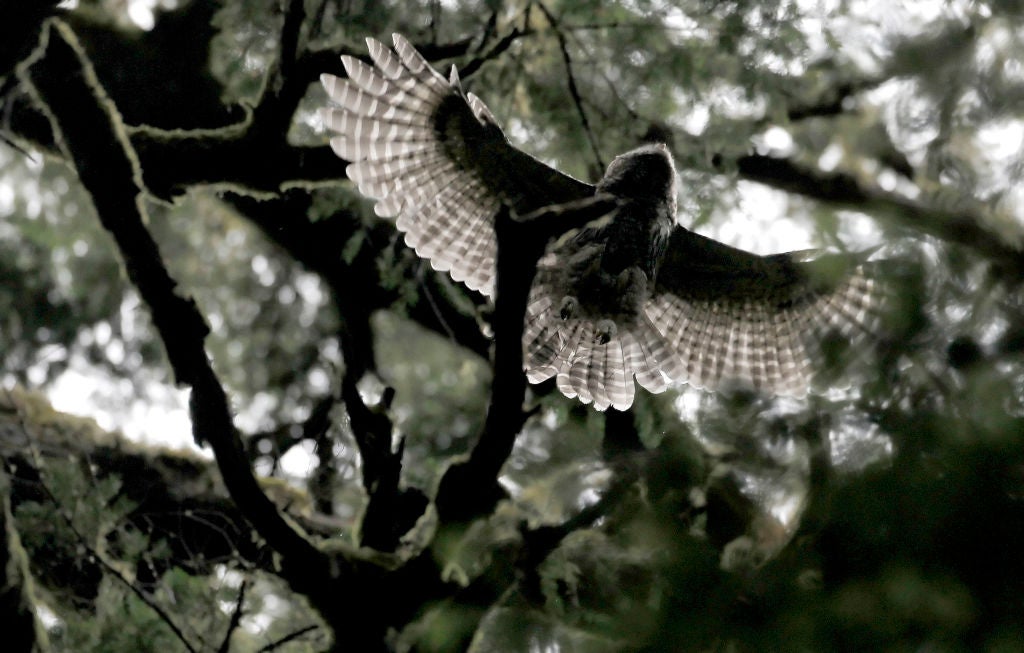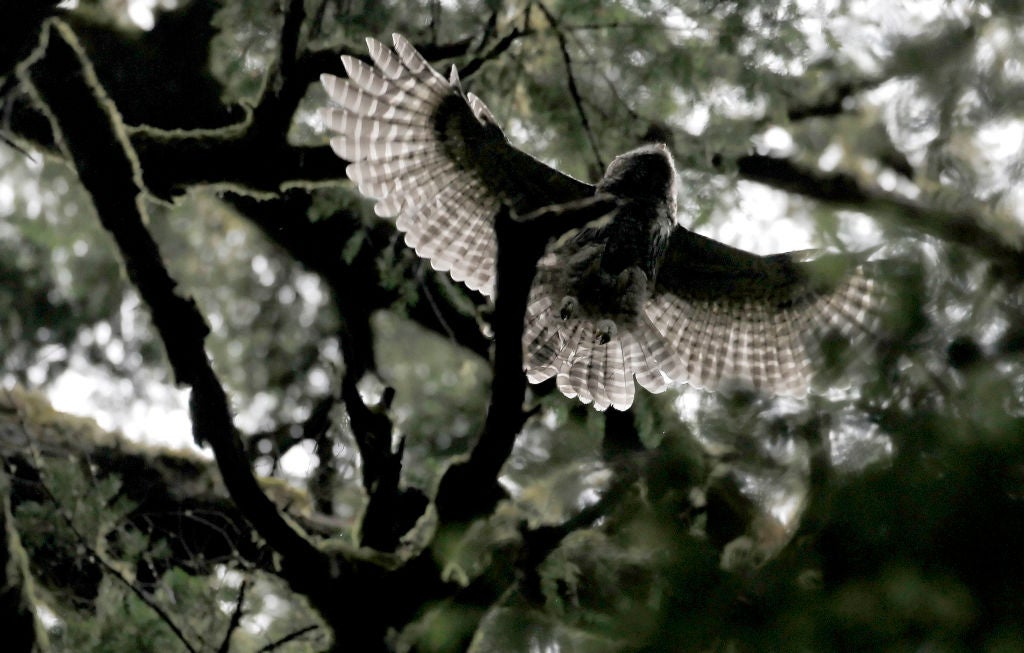
Barred owls are notoriously aggressive and territorial, and have been known to attack humans, even when seemingly unprovoked. Now, the federal government plans to authorize killing up to 450,000 barred owls across the western United States under a management strategy finalized in 2024.
The management plan is not a new proposal, but it follows a long tradition of hikers in the Pacific Northwest reportedly being attacked by the flying predator.
Reports of aggressive owls are well-documented and longstanding. Multiple runners in the Portland area have reported being attacked and left with wounds throughout the years. Stolen hats, visible puncture marks, and advisories to wear hard hats in certain parts of the city have all been associated with the owl attacks. And after a Washington woman was repeatedly ambushed by an owl while walking in the woods near her house in 2022, biologists report that the occurrence is becoming more frequent.
As most true crime fans will recall, the “owl theory” was one hypothesis put forward to explain the death of Michael Peterson’s wife in the Netflix documentary The Staircase. That’s right, some argue that Kathleen Peterson may have died after being attacked by a massive owl.
The U.S. Fish and Wildlife Service (FWS) management plan, however, is designed not to save humans from barred owls but to save other, less dominant species of owls, such as the northern spotted owl and the California spotted owl. Barred owls, which are native to the eastern seaboard but only appeared west of the Mississippi in the early 1900s, are classified as invasive to the West and Northwest. In total, the FWS says in its Record of Decision that no more than 15,600 invasive barred owls per year could be killed under full implementation of their approved strategy.
Stretched out over the proposed 30-year management period, this would mean a total of 468,000 barred owls would be euthanized throughout the western United States. However, the FWS added that “this is an upper limit that may be removed assuming maximum implementation of the strategy,” adding that, even if reached, “it would result in the annual removal of less than one-half of one percent of the current North American barred owl population.”
In addition to attacking humans, the FWS notes that barred owls are one of two primary threats to the continued survival of the threatened northern spotted owl, along with habitat loss, because barred owls are “larger, more aggressive, and have a wider prey base.” Unlike northern spotted owls, California spotted owls are not yet classified as threatened but “near threatened.” However, this species, too, faces severe displacement from barred owls.
At least 14 national parks are included in the areas where barred owls could be killed, including the Washington national parks Olympic, Mount Rainier, and North Cascades, Oregon’s Crater Lake, and the Sequoia and Kings Canyon, as well as Yosemite, Redwood, and Lassen Volcanic National Parks in California.
Environmental and animal welfare groups are not pleased. Animal Wellness Action and the Center for a Humane Economy both filed lawsuits against the FWS over the plan last year. Last week, the Coalition to Protect America’s National Parks (CPANP), a nonprofit, published a letter to Colorado Senator Michael Bennet, urging him to vote against implementing the management strategy. The letter’s author, wildlife biologist Elaine Frances Leslie, called the planned culls an “unprecedented and deeply troubling course of action” and one that “violates the spirit of the National Park Service’s mission.”
Leslie noted that although barred owls are not native to the Northwest and West, “range expansion is a well-documented ecological process” and “while we agree that some of the range expansions are due to climate change, fragmentation, and other human-caused disturbance, the rate of range expansion is inevitable. We have considered policy, but we must also consider moral and ethical concerns. To massacre barred owls to protect the spotted owl in this matter is unethical.”
FWS explained that the culling will be performed by professional removal specialists who meet training, experience, and competency requirements, which include “the ability to accurately identify spotted owls and barred owls using both visual and auditory means, and confidently distinguish between the two species.” The agency notes that no public hunting of barred owls is permitted under the strategy, and that it is unlawful for anyone to kill a barred owl without authorization under the Migratory Bird Treaty Act.
Leslie and the CPANP argue that, among other issues, it will be challenging to ensure that the owls killed are exclusively barred, not spotted, and claim that the plan “is a pretext to open up old-growth forests in the Pacific Northwest, and to allow for incidental killing of threatened northern spotted owls.”
“There is no way that there will not be incidental ‘take’ (killing or capturing) in a project of this size and scope,” she wrote. “It’s clear that this plan will be detrimental to both barred and spotted owls.”
The post Inside the Government’s Plan to Kill Nearly a Half-Million Barred Owls appeared first on Outside Online.














